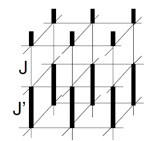The dynamic behavior of electrons in magnetic fields is crucial for understanding physical processes, such as the quantum Hall effect, which are important in many areas of solid state physics, including electrical conductivity. Yet, there is much that remains unknown about exactly how electrons behave in a magnetic field.
In research published today in Nature Communications, researchers Franco Nori and Konstantin Bliokh from the RIKEN Center for Emergent Matter Science in Japan, in collaboration with an experimental team in Austria, have made the first direct observations of free-electron Landau states—a form of quantized states that electrons adopt when moving through a magnetic field—and found that the internal rotational dynamics of quantum electrons, or how they move through the field, is surprisingly different from the classical model, and in line with recent quantum-mechanical predictions made at RIKEN.
The experimental team used a transmission electron microscope to generate nanometer-sized electron vortex beams in which the electrons had a variety of quantum angular-momentum states, and then analyzed the beam propagation to reconstruct the rotational dynamics of the electrons in different Landau states. According to classical physics, the electrons should rotate uniformly at what is called the cyclotron frequency, the frequency adopted by a charged particle moving through a magnetic field. Remarkably, what the researchers discovered is that in fact, depending on the quantum number describing the angular momentum, the electrons rotated in three different ways with zero frequency, the cyclotron frequency, and the Larmor frequency, which is half the cyclotron frequency. This shows that the rotational dynamics of the electrons are more complex and intriguing than was once believed.
According to Franco Nori, who leads the RIKEN team, “This is a very exciting finding, and it will contribute to a better understanding of the fundamental quantum features of electrons in magnetic fields, and help us to reach a better understanding of Landau states and various related physical phenomena.”


